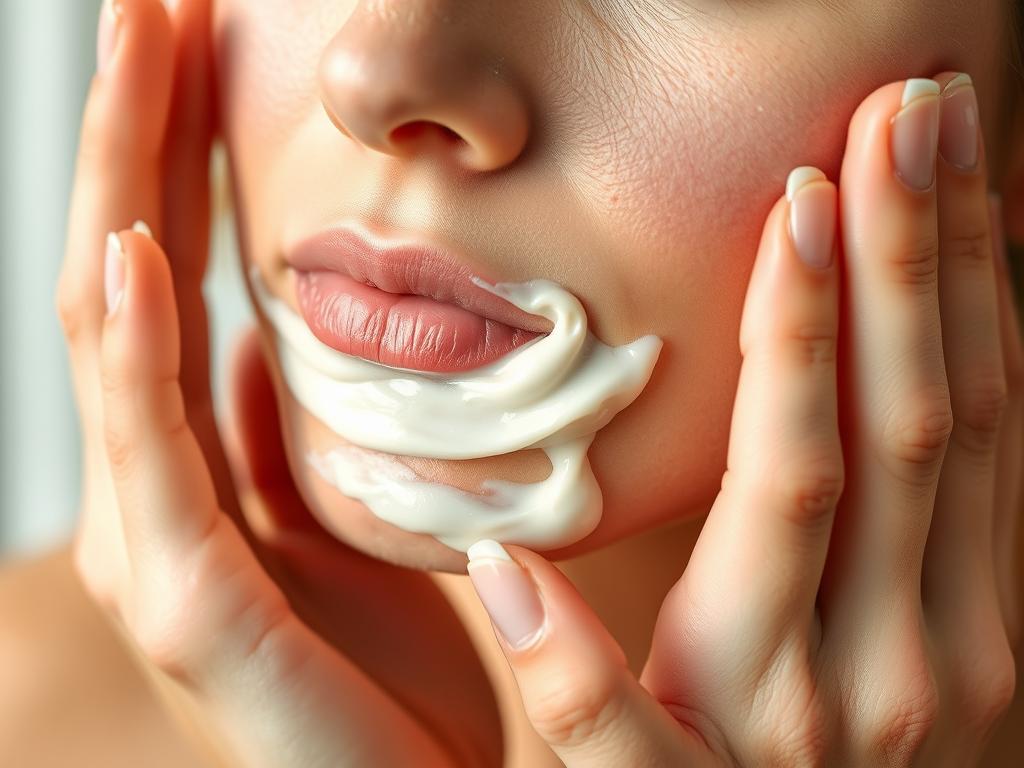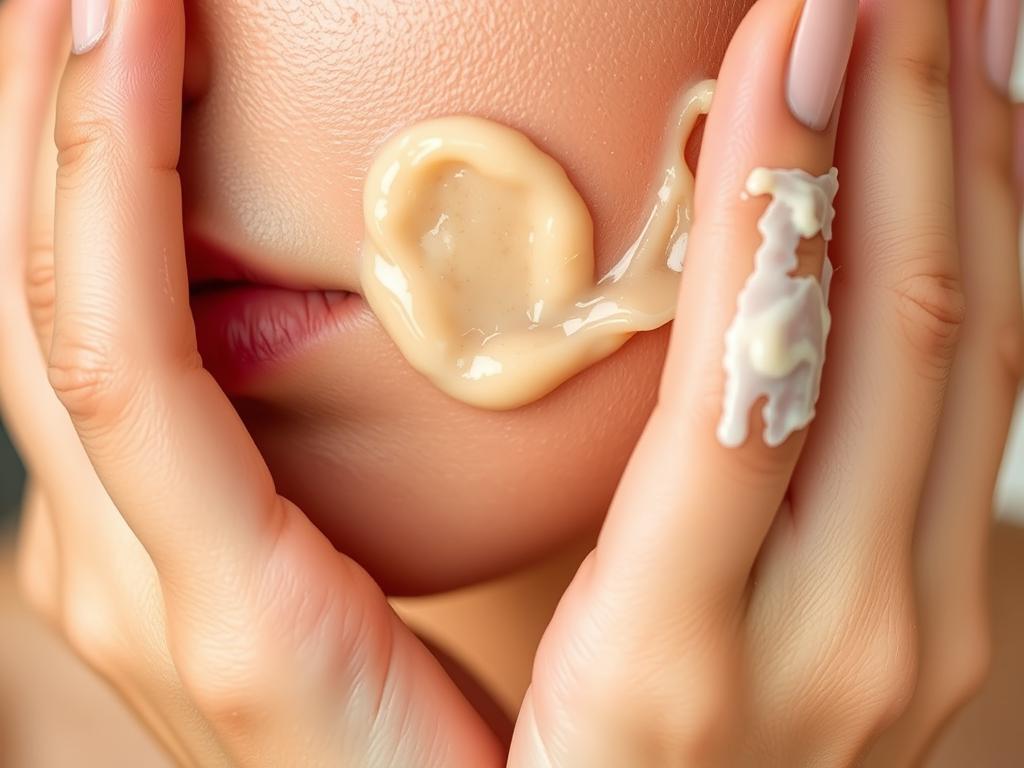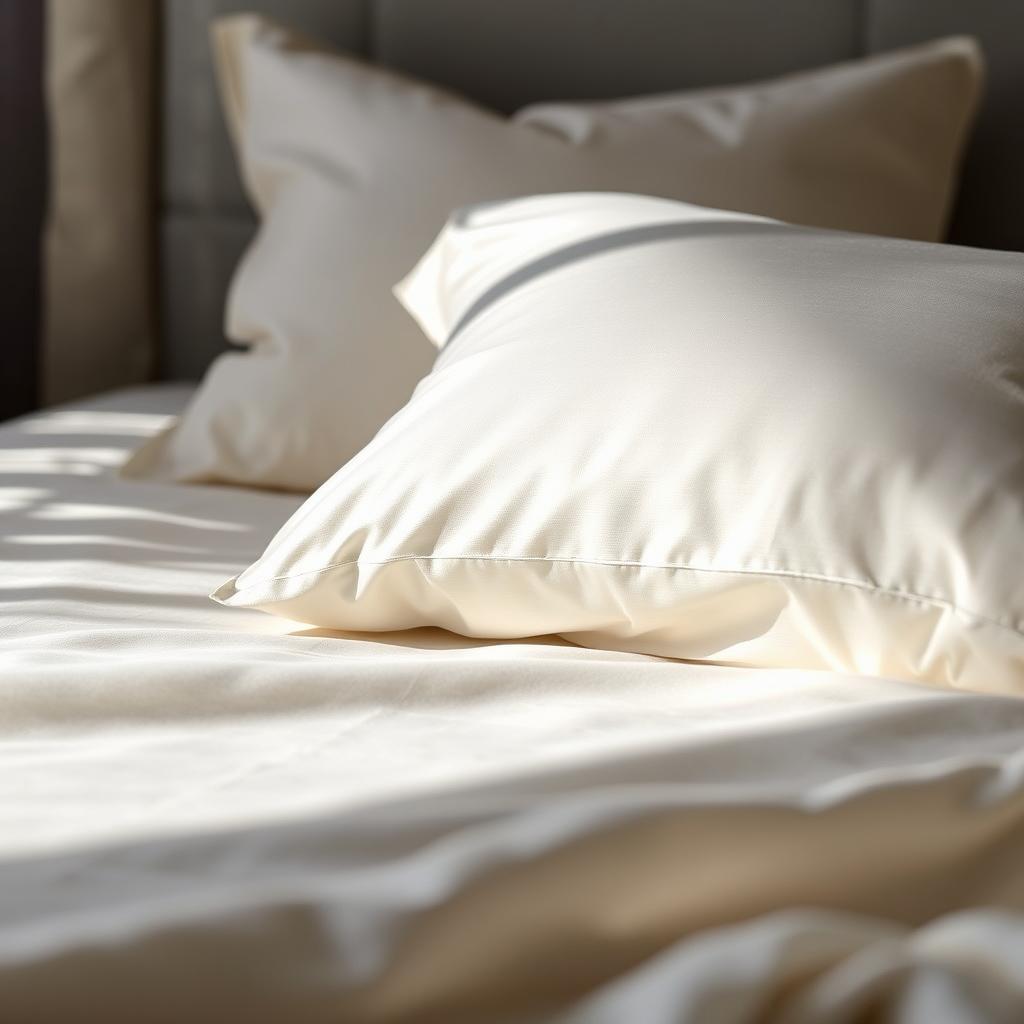At Glowskinhub.com, we believe beauty isn’t just a look—it’s a feeling

How to Repair Skin Barrier Naturally: A Complete Guide
When your Skin feels dry, irritated, or unusually sensitive, your Skin barrier might be compromised. This protective outer layer is your first line of defense against environmental aggressors, and when damaged, it can lead to a host of Skin issues. The good news? You can repair Skin barrier naturally with the right approach. This guide will walk you through understanding your Skin barrier, recognizing damage signs, and implementing a natural repair routine that restores your Skin’s health and radiance.
Benefits of a Healthy Skin Barrier
Your Skin barrier, technically called the stratum corneum, is the outermost layer of your Skin. Think of it as a brick wall where Skin cells are the bricks and lipids (ceramides, fatty acids, and cholesterol) are the mortar holding everything together. When intact, this barrier provides numerous benefits:

- Protection: Shields against environmental aggressors like pollution, UV rays, and harmful microorganisms
- Moisture retention: Prevents water loss and maintains optimal hydration levels
- Temperature regulation: Helps maintain consistent Skin temperature
- Reduced sensitivity: Minimizes reactions to potential irritants and allergens
- Balanced microbiome: Supports healthy bacteria that protect against infections
- Improved appearance: Creates plump, radiant Skin with fewer visible lines and even tone
When your Skin barrier functions properly, your complexion appears hydrated, plump, and bright. The Skin feels comfortable, not tight or irritated, and has a natural resilience against environmental stressors. This is why maintaining barrier health is fundamental to any effective skincare routine.
Causes of Skin Barrier Damage
Understanding what damages your Skin barrier is the first step toward effective repair. Several factors can compromise this protective layer:

Environmental Factors
- UV exposure
- Pollution
- Extreme temperatures
- Low humidity environments
Skincare Habits
- Over-exfoliation
- Harsh cleansers with sulfates
- Hot water washing
- Combining too many active ingredients
Lifestyle Factors
- Stress and poor sleep
- Unbalanced diet
- Dehydration
- Certain medications
One of the most common causes of barrier damage is an overzealous skincare routine. The popularity of active ingredients like AHAs, BHAs, and retinols has led many to over-exfoliate or combine incompatible products, stripping away the protective lipids that keep the barrier intact.
Signs of a damaged Skin barrier include: dryness, flakiness, redness, increased sensitivity, itching, burning sensation, breakouts, and a tight feeling after cleansing. If you’re experiencing several of these symptoms, your barrier likely needs repair.
Step-by-Step Natural Routine to Repair the Skin Barrier
Repairing your Skin barrier naturally requires a gentle, consistent approach. Follow this step-by-step routine to restore your Skin’s protective layer:
1. Simplify Your Routine
The first step in repairing damaged Skin is to strip back your routine to the essentials. Temporarily remove all active ingredients like AHAs, BHAs, vitamin C, and retinol. Focus on gentle cleansing, hydration, and protection while your barrier heals.
A minimal routine gives your Skin the chance to recover without additional stress from potentially irritating ingredients. Think of it as pressing the reset button on your skincare.

2. Choose a Gentle Cleanser
Switch to a pH-balanced, sulfate-free cleanser that won’t strip your Skin’s natural oils. Look for formulations with:
- Ceramides to help restore the Skin’s barrier
- Glycerin for hydration without clogging pores
- Aloe vera to soothe irritation and reduce redness
- Oat extract for its anti-inflammatory properties
Cleanse only once or twice daily, using lukewarm (never hot) water, and pat—don’t rub—your face dry with a soft towel.

3. Hydrate with Humectants
After cleansing, apply a hydrating Serum containing hyaluronic acid to damp Skin. This powerful humectant can hold up to 1000 times its weight in water, helping to restore moisture to damaged Skin. Other beneficial humectants include:
- Glycerin – attracts water to the outer Skin layer
- Polyglutamic acid – holds 4x more moisture than hyaluronic acid
- Beta-glucan – soothes while providing deep hydration

4. Restore with Barrier-Supporting Ingredients
The key to repairing your Skin barrier naturally lies in replenishing the essential components it needs to function properly. Look for products containing:
Ceramides
These lipids Make Up about 50% of the Skin barrier. They help seal in moisture and protect against environmental damage. Natural sources include wheat germ oil and rice bran oil.
Fatty Acids
Essential fatty acids help maintain Skin’s integrity and moisture balance. Find them in plant oils like rosehip, sunflower, and evening primrose oil.
Cholesterol
Works with ceramides and fatty acids to form a protective barrier. Natural sources include shea butter and avocado oil.

5. Seal with Occlusive Moisturizers
After applying hydrating and repairing ingredients, seal everything in with an occlusive moisturizer. These create a physical barrier that prevents water loss and protects your Skin while it heals. Natural occlusives include:
- Shea butter – rich in fatty acids and vitamins
- Squalane – lightweight oil similar to Skin’s natural sebum
- Jojoba oil – closely resembles human sebum
- Beeswax – creates a protective barrier without clogging pores

6. Protect with SPF
UV damage is one of the primary causes of barrier impairment. Always finish your morning routine with a mineral sunscreen (zinc oxide or titanium dioxide) with SPF 30 or higher. These physical blockers are less likely to irritate sensitive, damaged Skin than chemical sunscreens.

Need more personalized skincare advice?
Check out our Guide to Building a Minimalist Skincare Routine for sensitive Skin types.
Common Mistakes That Worsen Skin Barrier Issues
Even with the best intentions, many people make mistakes that can further damage their Skin barrier. Avoid these common pitfalls during your repair journey:

Physical Exfoliation
Harsh scrubs and brushes create micro-tears in the Skin, further compromising your barrier. During repair, avoid all physical exfoliants, including washcloths and facial brushes.
Hot Water
Hot water strips away natural oils that protect your Skin barrier. Always wash with lukewarm water, especially when your barrier is compromised.
Layering Too Many Products
Using multiple serums, essences, and treatments can overwhelm damaged Skin. Stick to a minimal routine with just the essentials while repairing your barrier.
Combining Active Ingredients
Using retinol with AHAs/BHAs or vitamin C can over-exfoliate and irritate Skin. During repair, eliminate actives completely, then reintroduce them one at a time, on alternate days.
Skipping Moisturizer
Even oily Skin needs moisturizer, especially during barrier repair. Choose non-comedogenic formulas if you’re concerned about breakouts.
Ignoring Diet and Hydration
Your Skin barrier needs support from within. Ensure adequate water intake and consume foods rich in essential fatty acids, antioxidants, and zinc.
Important: If your Skin barrier is severely damaged (extremely red, painful, or showing signs of infection), consult a dermatologist before attempting to treat it yourself.
FAQs About Skin Barrier Repair
How long does it take to repair a damaged Skin barrier naturally?
The time needed to repair your Skin barrier depends on the extent of the damage and your Skin’s natural healing ability. For mild damage, you might see improvement in 2-4 weeks of consistent care. More severe damage can take 1-3 months for complete repair. Consistency with your gentle routine is key to successful healing.
Can I wear makeup while repairing my Skin barrier?
It’s best to minimize makeup use while your Skin barrier heals. If you must wear makeup, choose mineral-based products free from potential irritants like Fragrance and alcohol. Always remove makeup gently with a barrier-friendly cleanser, and never sleep with makeup on as this can further compromise your Skin.
How can I tell if my Skin barrier is improving?
Signs of improvement include reduced redness and irritation, decreased sensitivity to products, better moisture retention (Skin feels hydrated for longer), less flakiness, and an overall more comfortable feeling in your Skin. Your complexion may also appear more radiant and even-toned as the barrier function normalizes.
Should I see a dermatologist for my damaged Skin barrier?
Consider consulting a dermatologist if your Skin is severely damaged, if you experience persistent pain or discomfort, if there are signs of infection, or if your at-home repair efforts show no improvement after several weeks. A dermatologist can provide prescription treatments and personalized advice for your specific situation.
Can I repair my Skin barrier if I have acne?
Yes, and repairing your barrier may actually improve acne in the long run. A compromised barrier can trigger inflammation and excess oil production, potentially worsening breakouts. Focus on gentle, non-comedogenic products that support barrier repair without clogging pores. For more information, check out our guide on Holistic Approaches to Acne-Prone Skin.

Best Natural Tips for Skin Barrier Recovery
Beyond your basic skincare routine, these natural approaches can help support your Skin barrier repair from multiple angles:

DIY Oatmeal Mask
Colloidal oatmeal has anti-inflammatory properties that soothe irritated Skin while strengthening the barrier. Mix ground oats with honey and a few drops of jojoba oil for a weekly treatment mask.

Omega-Rich Diet
Consume foods high in omega-3 and omega-6 fatty acids like salmon, walnuts, flaxseeds, and avocados. These essential fatty acids help maintain Skin’s lipid barrier from within.

humidifier Use
Running a humidifier, especially during winter or in dry climates, helps maintain environmental moisture that supports your Skin barrier. Place one in your bedroom for overnight support.

Aloe Vera
Fresh aloe vera gel contains compounds that promote healing and hydration. Apply pure aloe gel directly from the plant or use a high-quality, preservative-free commercial version.

Stress Management
Chronic stress increases cortisol, which can impair barrier function. Incorporate stress-reduction techniques like meditation, deep breathing, or yoga into your daily routine.

Silk Pillowcases
Cotton pillowcases can draw moisture from your Skin and create friction. Switch to silk pillowcases to reduce moisture loss and minimize irritation while you sleep.
Conclusion: Patience and Consistency Are Key
Repairing your Skin barrier naturally is not an overnight process, but with patience and the right approach, you can restore your Skin’s protective function. Focus on gentle cleansing, hydration, and barrier-supporting ingredients while eliminating potential irritants from your routine. Remember that what you put into your body is just as important as what you put on your Skin, so support your barrier from within through proper nutrition and hydration.
As your Skin barrier heals, you’ll notice improved hydration, reduced sensitivity, and a healthier, more radiant complexion. Once your barrier is restored, maintain its health by continuing to treat your Skin gently and being mindful of potential irritants.






